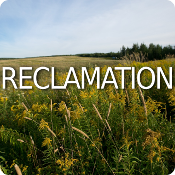- Why Mining Matters
- Jobs
- Safety
- Environment & Operations
- FAQ
- Links
- Fun Stuff
You are here
Sebastopol Monument
A well-known lion statue in Halifax’s Old Burying Ground commemorates a different war in Ukraine: the Crimean War.
The Crimean War, which started in 1853, pitted Britain, France, Turkey and Sardinia against Russia, whose ruler, Czar Nicholas I, was attempting to expand his influence. It ended with the signing of the Treaty of Paris in 1856 and Russia’s agreement to give back the territory it had seized.
A number of Nova Scotians volunteered to fight in the Crimean War. The Sebastopol Monument commemorates Major Augustus Welsford of the 97th Regiment and Captain William Parker of the 77th Regiment, who both died in 1855 at the storming of the Redan fortification at Sevastopol, known at the time as Sebastopol.
The monument was built in 1860 and is believed to be the only North American monument to the Crimean War.
It was built by mason George Laing, a prominent builder in Halifax during the late 1850s and 1860s. Laing was born in Scotland and immigrated to Halifax in 1858 after spending some time living in both Newfoundland and New Brunswick. His Halifax buildings include the Halifax Club and Keith Hall for brewer and politician, Alexander Keith. Laing also built the Halifax Provincial Court on Spring Garden Road.
The foundation of the Sebastopol Monument is granite from Purcell’s Cove along Halifax’s Northwest Arm. Quarries in Purcell’s Cove were some of the oldest in Halifax and played a key role in building the city (https://notyourgrandfathersmining.ca/king-quarry).
The arch and lion are made of sandstone from Marys Point, Albert County, New Brunswick. The lion was carved from a 12-ton block.
The first reference to quarrying at Marys Point was written in 1840 and quarries operated there until the early 1880s. Sandstone was quarried from the shore, which is directly west of the Joggins Fossil Centre across the Bay of Fundy, and shipped from a wharf at the site. Marys Point stone was used in Halifax and Saint John, and places as far away as Boston, New York and Philadelphia.
While most sandstone buildings and monuments in Nova Scotia got their sandstone from the Wallace area of Cumberland County, George Laing had run the quarry in Marys Point prior to moving to Halifax, so he sourced the Sebastopol Monument’s stone from a site he knew well.
Today, the Marys Point quarry is a migratory bird sanctuary, an example of how former mines and quarries can be returned to nature after operations are finished.
In 2014, Russia again invaded Ukraine’s Crimean peninsula and has occupied it since. Russia invaded further into Ukraine in 2022, triggering a multi-year war.


















































































